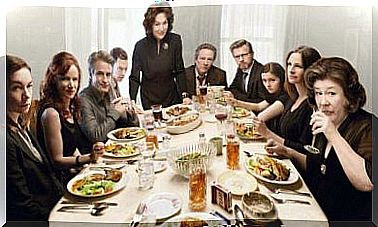Sharing Delirium, Disorder “Folie A Deux “

Due to different mental health problems throughout their lives, mother and daughter had locked themselves in an absorbing relationship, without friends or contacts with the outside. Isolated in their grandmother’s house, they had withdrawn from reality and from the people around them, whom they mistrusted because they felt it threatening. His jailer: delirium.
After the death of their maternal grandmother, with whom they had shared a house, they were experiencing a series of strange events, lacking money, noticing how the paintings moved and seeing shadows in the house. The people around her were manipulated by the spirit of the grandmother to misbehave and harm them. They had been living to the beat of these ideas for four years. Although there were no signs of depression, they were terrified.
The certainty that salvation was in the church made them try to attend the temple even under the conviction that something bad would happen to them, and always caused by the spirit of their grandmother. Finally, little was wrong, since the daughter fainted.
What happened to them? Two people saw, heard and felt the same events, could they be wrong? Was their behavior the product of a delusion? This true story of a mother and daughter serves to illustrate what would be a case of shared psychosis, or Folie a Deux .
Inside the unusual … the strangest yet
Between the diagnostic frontiers of the psychology and psychiatry manuals, there are still not fully defined spaces where the strange is kept within the unusual. This is the case of a rare type of psychosis, the shared or “ folie a deux ”. It is defined as the state in which there is a delusion shared by two people who usually have a relationship or relationship.
When it goes further and more than two suffer from paranoia or delirium, the name is adjusted to the number of people, folie a trois, folie a quatre, folie a famile or folie à plusieurs (many).

Types of “folie”
Many questions remain about this rare disorder. However, it is known that it usually occurs between families or groups of people physically and psychologically isolated from others, where one of the two people has a greater influence on another, or a higher intelligence.
It may happen that one of the two imposes its delusion on another. In these cases, separating them alleviates the symptoms in the person who has “accepted” the unrealistic beliefs. If this is not the case and you continue with the demonstrations despite the separation, it is said that it has been transmitted or communicated to you.
It can even happen that a psychosis is “contagious” to another person who already had certain beliefs, but not with the same ideas. It then happens that the ” folie” is induced.
Is madness contagious?
In the rare cases where unreal beliefs have been found to be taken as true by a group of independent people, it is known as “mass hysteria.” Of the best known examples:
- The famous response of many listeners who heard the “Martian invasion” that Orson Welles described live over the airwaves.
- The idea that witches roamed freely through fields and villages doing evil between the fifteenth and eighteenth centuries, led to the death of many women at the hands of men irrationally infected with beliefs and legends.
- The different versions of the end of the world. The first at the turn of the millennium and the second, the Mayan prophecy, made many people across the globe doubt whether airplanes were going to hit their houses or the world would end overnight.
Despite being very striking, the cinema has dedicated few stories to this pathology. One of the films that reflects a true story of two teenagers “infected” by the same delusional idea is “Beautiful creatures” by director Peter Jackson.

How do you get to share a delusion?
There are several conditions that must exist between two people to reach this extreme, regardless of whether one of the two is vulnerable to becoming ill with psychosis.
- Emotional dependence plays a very important role. Relationships are flawed in this direction.
- The intellectual superiority or dominance role of one of the two does not imply that the other has some kind of mental retardation or deficiency.
- Empathy is also an important factor. Living the symptoms of the other person reflects that it is something more than a dominance-submission relationship.
In the end, we must understand that for someone who is extremely emotionally dependent on another person, and who does not have other types of relationships in their life, accepting the ideas of delusion seems healthier than accepting the end of the couple (either between sisters , married couples or mothers and daughters).
It is very strange to come across this diagnosis. So are solitary confinement situations where this pathology could develop. In any of the cases, we see how the mind can be terrifying and fascinating at its most extreme point to – according to the hypotheses – satisfy the needs of acceptance, affection and company at its maximum and sickly exponent.









